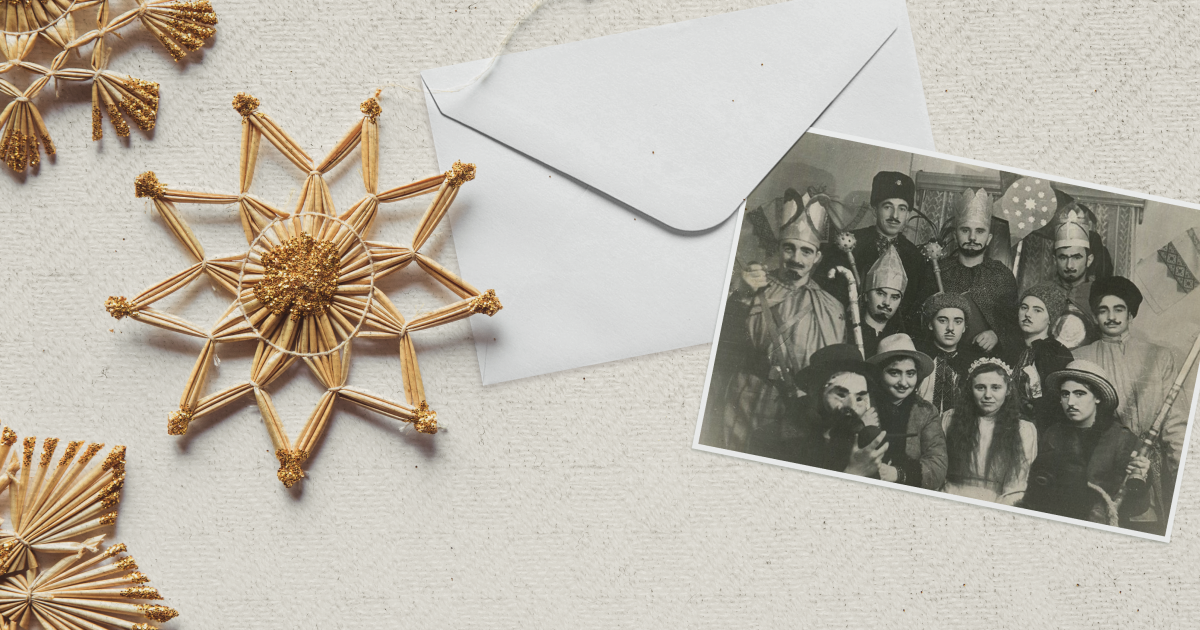Christmas Card from Ukraine

The Christmas season in Ukraine undergoes a change. Not only due to the full-scale invasion. These changes started prior to 2022. The Russian forces crossed Ukrainian borders in 2014 and set off a total overhaul of the Ukrainian identity. Christmas festivities, so dear to many European cultures, are not an outlier to that process.
Although Ukraine is often presented in foreign media as a «divided» or «emerging» nation-state, social change is common to most, if not all, societies. What we see as «essential» or «traditional», often is a new invention. This is also true for Christmas. The current form of the 2000 year old holiday only emerged in Victorian England with the expansion of industrial cities, culturologist John Storey believes. Moving forward, «single homogenized version» of Christmas started to evolve, University College of London’s Daniel Miller notes. It included «the Christmas tree from the German tradition, the filling of stockings from the Dutch tradition, the development of Santa Claus mainly from the United States, and the British Christmas card».
Soviet New Year
Not in the Soviet Union, however. The Bolshevik empire was by definition atheistic, although the level of its anti-religious fervor varied through the century. Christmas traditions were banned and coopted simultaneously, while the party was constructing its own conception of festivities. Karen Petrone, a historian at the University of Kentucky, highlights that the fir tree was reintroduced in 1935. It happened because the party officials believed that «the origins of the holiday, which were pre-Christian in any case, were less important than the benefits it could bring to Soviet children». It was the beginning of the new year — and the new communist life which they were celebrating.
Although Soviet ideologs attempted to mirror Western patterns of consumerism, they were facing a major hurdle. Access to consumerist goods was simply not there. Therefore, Soviet citizens used what they had to cook for the New Year Eve celebrations. These recipes often included a combination of what local shops were not short of.
A carrot always comes with the stick. Those who practiced Christmas celebrations faced repression. At times, this took a farcical turn: on 1971 New Year Eve, the Ukrainian KGB briefed the party leadership on the plans of «nationalists» to perform коляда, a tradition of going from door to door while singing carrolls. Among those who practiced this was Ukrainian poet Vasyl Stus who was persecuted and died in a Soviet camp.
Post-Soviet?
The Christmas season is intrinsically nostalgic. Even in the Victorian Englands, the quest for «the true old Christmas» was crucial to the celebration. This is why many Ukrainians still enjoyed the Soviet New Year, despite the change in material conditions. For instance, my grandmother was absolutely fascinated by the diversity of foods in supermarkets — and would still cook a salad, made up from a random combination of herring, red beet, onion and mayonnaise.
Now, there is an urge within Ukrainian society to free ourselves from the pangs of the past. It is up to Ukrainians to decide, if such a break from the Moscow-oriented celebrations is what they want. This should not trigger a total copycatting of Western Christmas, because Ukrainian culture still holds many vibrant elements of pre-Soviet times.
Among them, are колядки and щедрівки, songs performed on the eve of Christmas and New Year respectively. You may know one such piece under the name of «Carol of the Bells». It is striking that these songs were preserved despite the Soviet repression and can still are sung by senior performers. The Polyphony Project recorded many of them. Enjoy.


